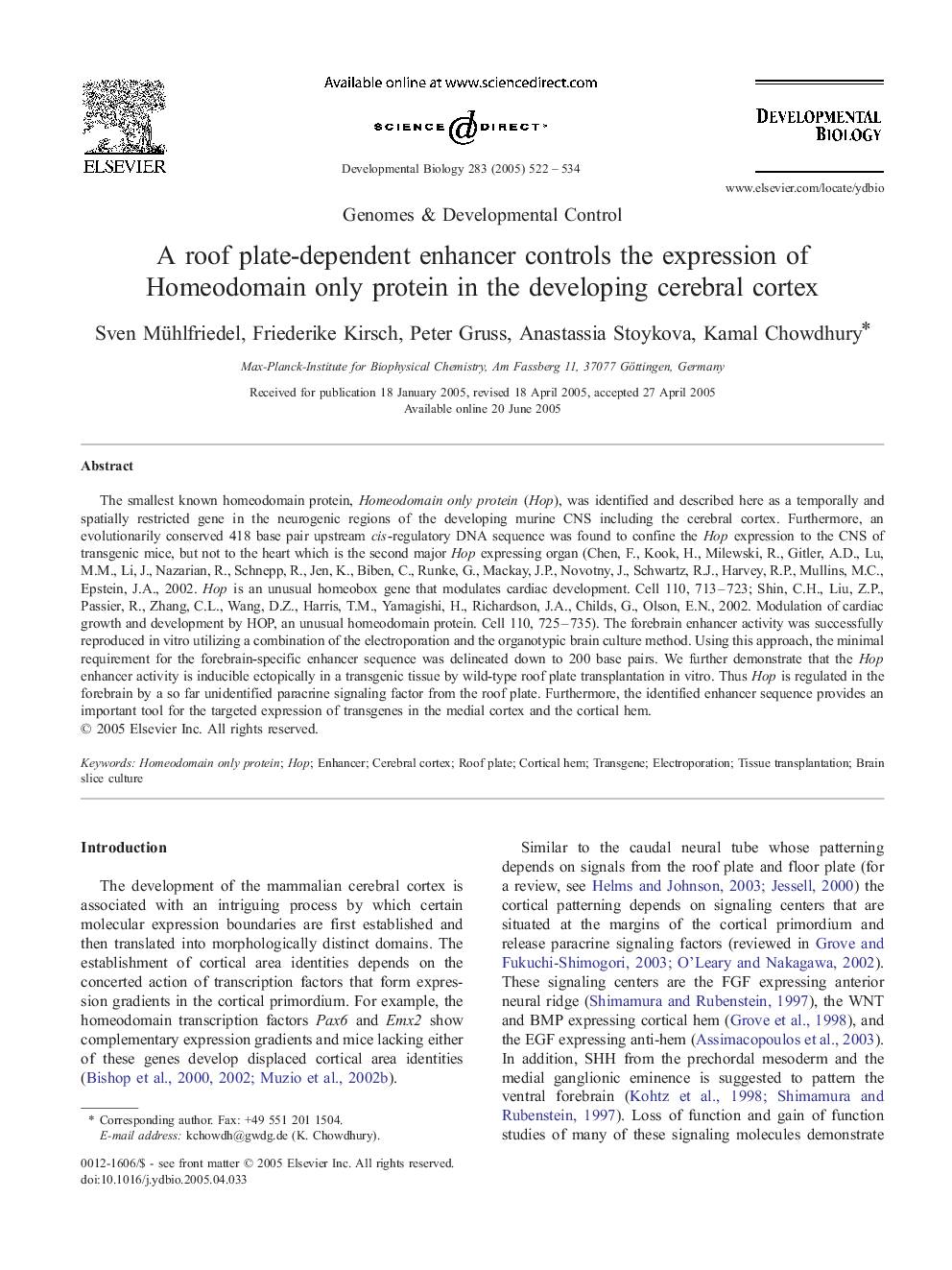| Article ID | Journal | Published Year | Pages | File Type |
|---|---|---|---|---|
| 10934060 | Developmental Biology | 2005 | 13 Pages |
Abstract
The smallest known homeodomain protein, Homeodomain only protein (Hop), was identified and described here as a temporally and spatially restricted gene in the neurogenic regions of the developing murine CNS including the cerebral cortex. Furthermore, an evolutionarily conserved 418 base pair upstream cis-regulatory DNA sequence was found to confine the Hop expression to the CNS of transgenic mice, but not to the heart which is the second major Hop expressing organ Chen, F., Kook, H., Milewski, R., Gitler, A.D., Lu, M.M., Li, J., Nazarian, R., Schnepp, R., Jen, K., Biben, C., Runke, G., Mackay, J.P., Novotny, J., Schwartz, R.J., Harvey, R.P., Mullins, M.C., Epstein, J.A., 2002. Hop is an unusual homeobox gene that modulates cardiac development. Cell 110, 713-723; Shin, C.H., Liu, Z.P., Passier, R., Zhang, C.L., Wang, D.Z., Harris, T.M., Yamagishi, H., Richardson, J.A., Childs, G., Olson, E.N., 2002. Modulation of cardiac growth and development by HOP, an unusual homeodomain protein. Cell 110, 725-735. The forebrain enhancer activity was successfully reproduced in vitro utilizing a combination of the electroporation and the organotypic brain culture method. Using this approach, the minimal requirement for the forebrain-specific enhancer sequence was delineated down to 200 base pairs. We further demonstrate that the Hop enhancer activity is inducible ectopically in a transgenic tissue by wild-type roof plate transplantation in vitro. Thus Hop is regulated in the forebrain by a so far unidentified paracrine signaling factor from the roof plate. Furthermore, the identified enhancer sequence provides an important tool for the targeted expression of transgenes in the medial cortex and the cortical hem.
Keywords
Related Topics
Life Sciences
Biochemistry, Genetics and Molecular Biology
Cell Biology
Authors
Sven Mühlfriedel, Friederike Kirsch, Peter Gruss, Anastassia Stoykova, Kamal Chowdhury,
